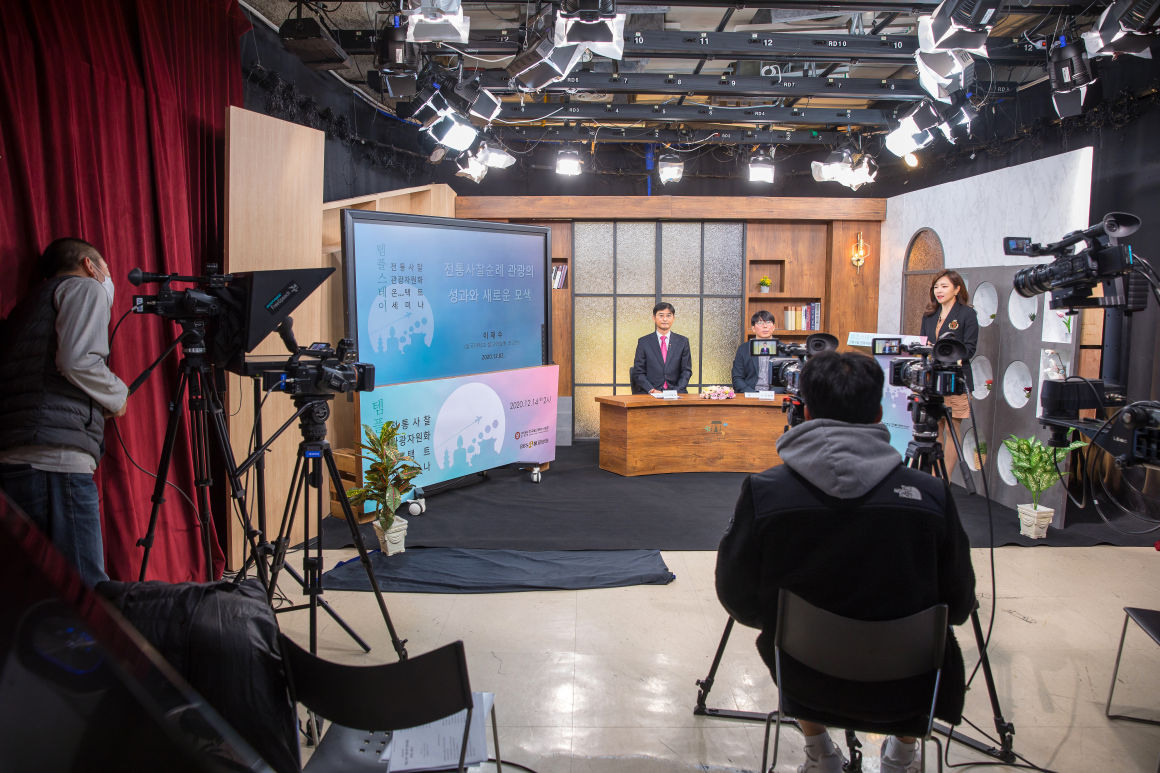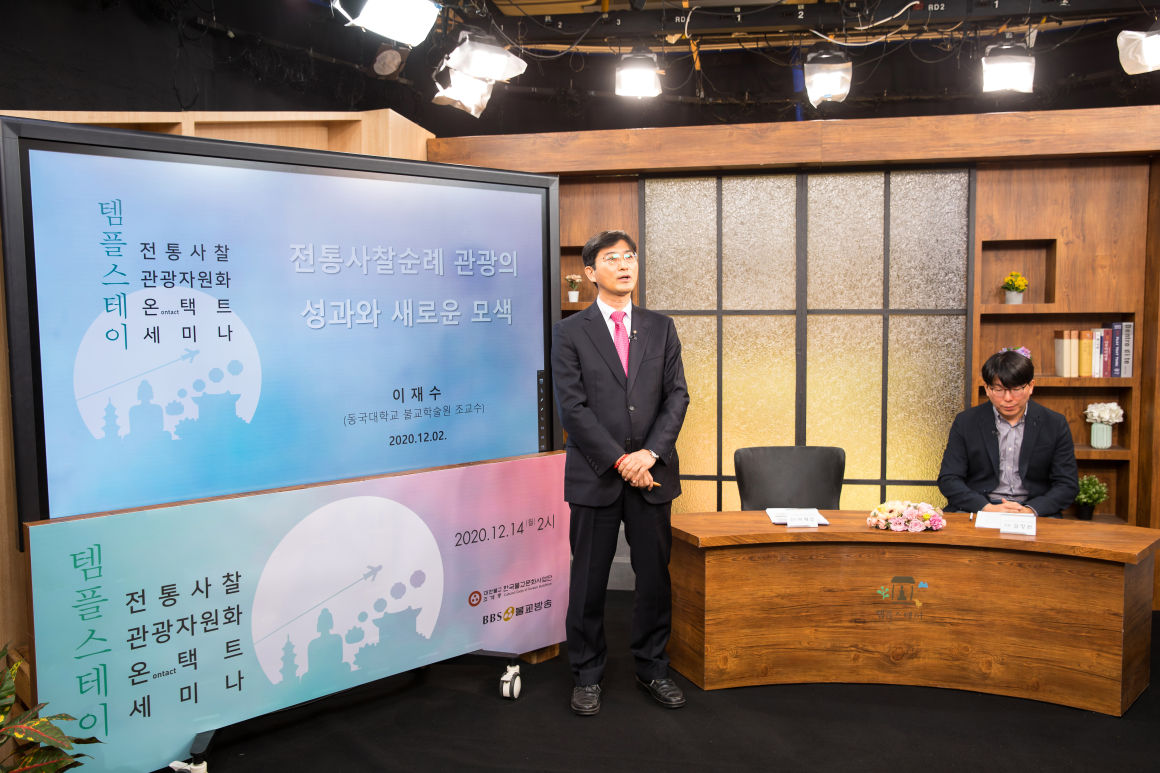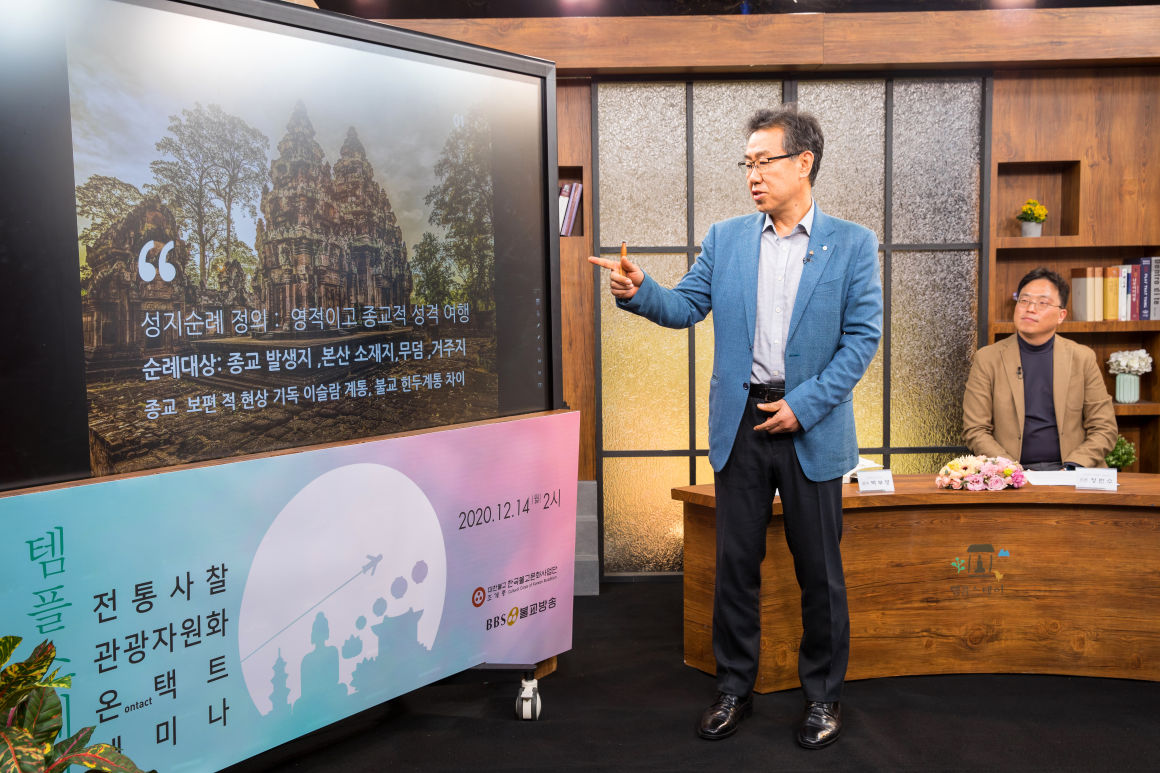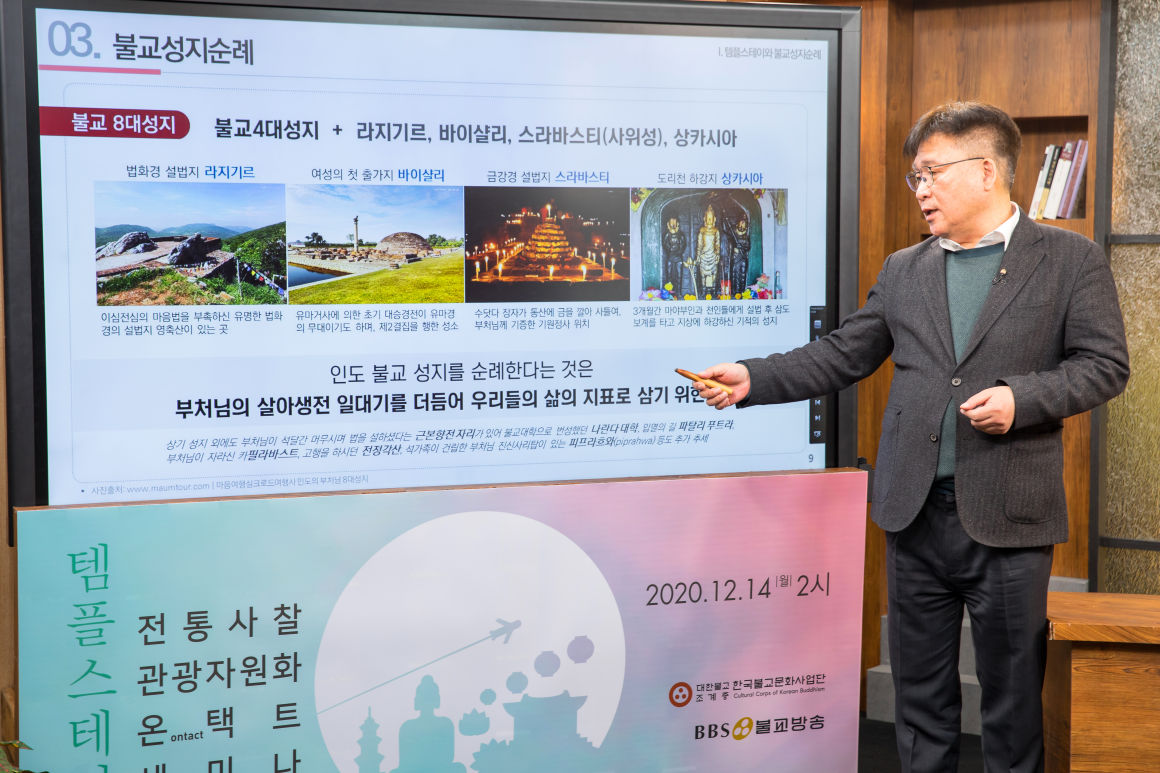Exploring How to Connect Templestay with Traditional Temple Pilgrimages
Virtual Seminar on Developing Tourism Resources for Templestay Temples

Due to the COVID-19 pandemic, a “Virtual Seminar on Developing Tourism Resources for Templestay Temples” was held on December 2 in a studio of the Buddhist Broadcasting System (BBS) in Mapo-gu, Seoul. The Seminar was held to explore how to develop tourism resources by connecting Templestay programs and traditional temple pilgrimage programs, both conducted by the Cultural Corps of Korean Buddhism.
Consisting of a presenter and a discussant for each theme, the Seminar was divided into three themes: “The Outcome of Traditional Temple Pilgrimage Tourism and Its New Directions”; “The Religious Meaning of Pilgrimage: Pilgrimage Tourism Reflected in the Cases of Korean and International Religions”; and “How to Develop Tourism Resources by Connecting Templestay and Temple Pilgrimages.”

About the first theme, “The Outcome of Traditional Temple Pilgrimage Tourism and Its New Directions,” Prof. Lee Jae-su from Dongguk University’s Academy of Buddhist Studies gave his presentation, and Researcher Kim Jeong-won from the Research Institute of Buddhist Cultural Heritage gave a discussion on the presentation. Prof. Lee said, “Pilgrimages meet the needs of a value-centered tourism trend. The project titled ‘Pilgrimage to 33 Temples Sacred to Gwaneum,’ which targeted 137 Templestay temples beginning from July 2008, holds great significance in terms of developing cultural content around storytelling.” Researcher Kim stated, “At the Research Institute of Buddhist Cultural Heritage in 2019 we chose 83 final target temples encompassing all regions of Korea and then investigated and discovered cultural elements related to cultural properties preserved by those temples.” He then further elaborated, saying, “In the process, we concluded that the sense of achievement felt by pilgrims is important, just as it is to those who walk the Camino de Santiago, and pilgrims should be able to interact both through online and offline platforms. In addition, ways to connect temple pilgrimages to over 130 Templestay temples must be explored.”

The second theme, “The Religious Meaning of Pilgrimage: Pilgrimage Tourism Reflected in the Cases of Korean and International Religions,” was presented by Bak Bu-yeong, permanent editorialist for Bulgyo Sinmun, a Buddhist newspaper. He said, “As a spiritual and religious journey, a pilgrimage may be explored by dividing it into three elements: faith toward a sacred place, pilgrimage as a religious ritual, and pilgrimage as a religious experience.” He then introduced some renowned pilgrimages, such as the Moslem Hajj, the Catholic Camino de Santiago pilgrimage, and the Shikoku pilgrimage route of Japanese Buddhism. The designated discussant for this theme, Prof. Jeong Ran-su of Hanyang University’s Div. of Tourism Studies, said, “In English the etymological origin of ‘travel’ means ‘trouble.’ It implies one is willing to grow by going to an unfamiliar troublesome place, just like the maxim ‘A fool wanders while the wise travel.’ A pilgrimage is in touch with the essence of travel. One should expand the pilgrimage tradition in Buddhism and induce public interest by developing more themes and pilgrimage courses. In this pandemic situation, the aspect of ‘pure healing’ could be greatly effective.”

The second theme, “The Religious Meaning of Pilgrimage: Pilgrimage Tourism Reflected in the Cases of Korean and International Religions,” was presented by Bak Bu-yeong, permanent editorialist for Bulgyo Sinmun, a Buddhist newspaper. He said, “As a spiritual and religious journey, a pilgrimage may be explored by dividing it into three elements: faith toward a sacred place, pilgrimage as a religious ritual, and pilgrimage as a religious experience.” He then introduced some renowned pilgrimages, such as the Moslem Hajj, the Catholic Camino de Santiago pilgrimage, and the Shikoku pilgrimage route of Japanese Buddhism. The designated discussant for this theme, Prof. Jeong Ran-su of Hanyang University’s Div. of Tourism Studies, said, “In English the etymological origin of ‘travel’ means ‘trouble.’ It implies one is willing to grow by going to an unfamiliar troublesome place, just like the maxim ‘A fool wanders while the wise travel.’ A pilgrimage is in touch with the essence of travel. One should expand the pilgrimage tradition in Buddhism and induce public interest by developing more themes and pilgrimage courses. In this pandemic situation, the aspect of ‘pure healing’ could be greatly effective.”
The seminar was released at 2 pm on December 14 through BBS’s YouTube channel.





